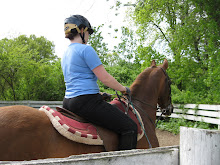Animals are heterotrophic multicellular eukaryotes. These organisms ingest food and most digest it in a central cavity. All animals reproduce sexually, although some members of some phyla can reproduce asexually.
CHARACTERISTICS:
All animals, excepting poriferans and cnidarians, have three germ layers of cells. These layers are as follows: the ectoderm (outer layer), the mesoderm (middle layer), and the endoderm (inner layer). The ectoderm develops into the skin, nerve tissue, and sense organs of the organism. The mesoderm becomes the muscles, blood, kidneys, and reproductive organs. The endoderm develops into the lungs, liver, pancreas, bladder, and stomach lining.
Except for sponges, all animals digest food extracellularly in a wholly or partially developed digestive system. Animals can be classified according to two digestive plans. The "sac body plan" has only one opening to the gut. Food and wastes enter and exit through one opening; this plan is termed "incomplete." The "tube-within-a-tube body plan" features two openings to the gut. Food enters through one opening and leaves through the second, earning this system the designation of "complete."
Most animals have symmetrical body plans, one that is regular and balanced. Some possess radial symmetry, in which the organism's body is organized equally around a central vertical axis. Others possess bilateral symmetry. This is when the body can be cut into two equal, mirror-image halves through only one vertical plane. There are four body surfaces on a bilaterally symmetrical organism: the anterior (front), the posterior (behind), dorsal (top), and the ventral surface (bottom). The sense organs are concentrated at the front to help orient the organism in its environment. There will always be an exception to the rule, however, and that would be sponges. Sponges do not move as adults and are asymmetrical.
The coelum is a fluid-filled body cavity completely surrounded by mesoderm. It provides space for the development and suspension of organs and organ systems. Animals with a coelum are known as coelumates, and those without: acoelumates. A coelum gives animals a structure to brace their muscles against, allowing them to respond and move more quickly. A coelum allows for more complex organ systems to develop.
Some animals produce asexually as well as sexually. Poriferans and many worm species can develop entirely new organisms from fragments of the parent. All animals produce sperm or eggs, and can carry out sexual reproduction. Less complex animals can have both male and female organs; these hermaphrodites produce sperm and egg cells, enabling them to reproduce without a mate.
IN SUMMARY:
Characteristics such as body symmetry, the presence or absence of a coelum, and the number of germ layers may be used to classify animals. Animals are multicellular heterotrophs. The simplest animals have two cell layers and a single body opening. The evolution of three cell layers and a coelum allowed animals to become more complex and mobile.
Use some of the words from this entry next time you play Scrabble!
Wednesday, February 17, 2010
Subscribe to:
Post Comments (Atom)

No comments:
Post a Comment
Everyone is entitled to their own opinions. Type away, but remember the social skills you learned in kindergarten!